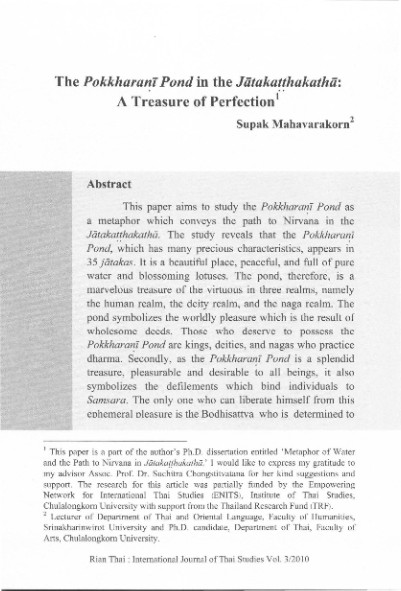Supak Mahavarakorn
Abstract
This paper aims to study the Pokkharani Pond as a metaphor which conveys the path to Nirvana in the Jatakatthakatha. The study reveals that the Pokkharani Pond, which has many precious characteristics, appears in 35 jatakas. It is a beautiful place, peaceful, and full of pure water and blossoming lotuses. The pond, therefore, is a marvelous treasure of the virtuous in three realms, namely the human realm, the deity realm, and the naga realm. The pond symbolizes the worldly pleasure which is the result of wholesome deeds. Those who deserve to possess the Pokkharani Pond are kings, deities, and nagas who practice dharma. Secondly, as the Pokkharani Pond is a splendid treasure, pleasurable and desirable to all beings, it also symbolizes the defilements which bind individuals to Samsara. The only one who can liberate himself from this ephemeral pleasure is the Bodhisattva who is determined to renounce Samsara and becomes a Buddha. In many jatakas, the Bodhisattva resides at the Pokkharani Pond where he practices contemplation.
In this context, the pond, which is peaceful, full of pure water and blossoming lotuses, symbolizes the serenity, wisdom and the fulfillment of perfection of the Bodhisattva. As a result, we may see clearly that the Pokkharani Pond, as a metaphor of water, is a literary technique significantly
used in the Jatakatthakatha to connote the process of dharma practice or, in other words, the path to Nirvana.
(Published in Rian Thai: International Journal of Thai Studies, Volume 3/2010, Page 283-301)
Full Text : Download
